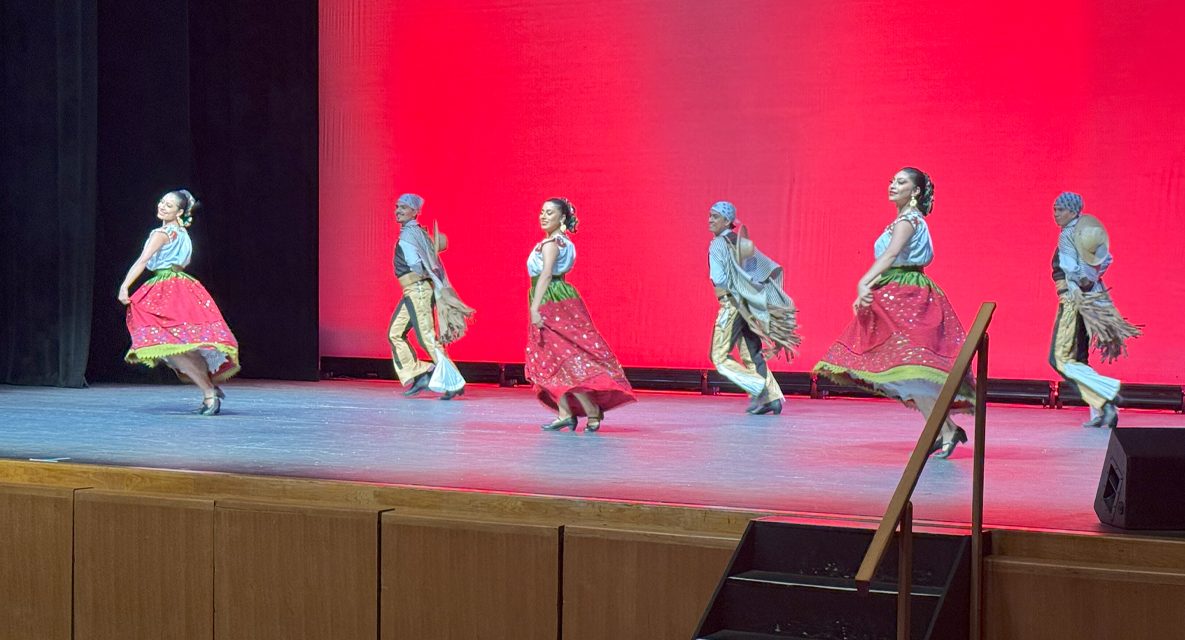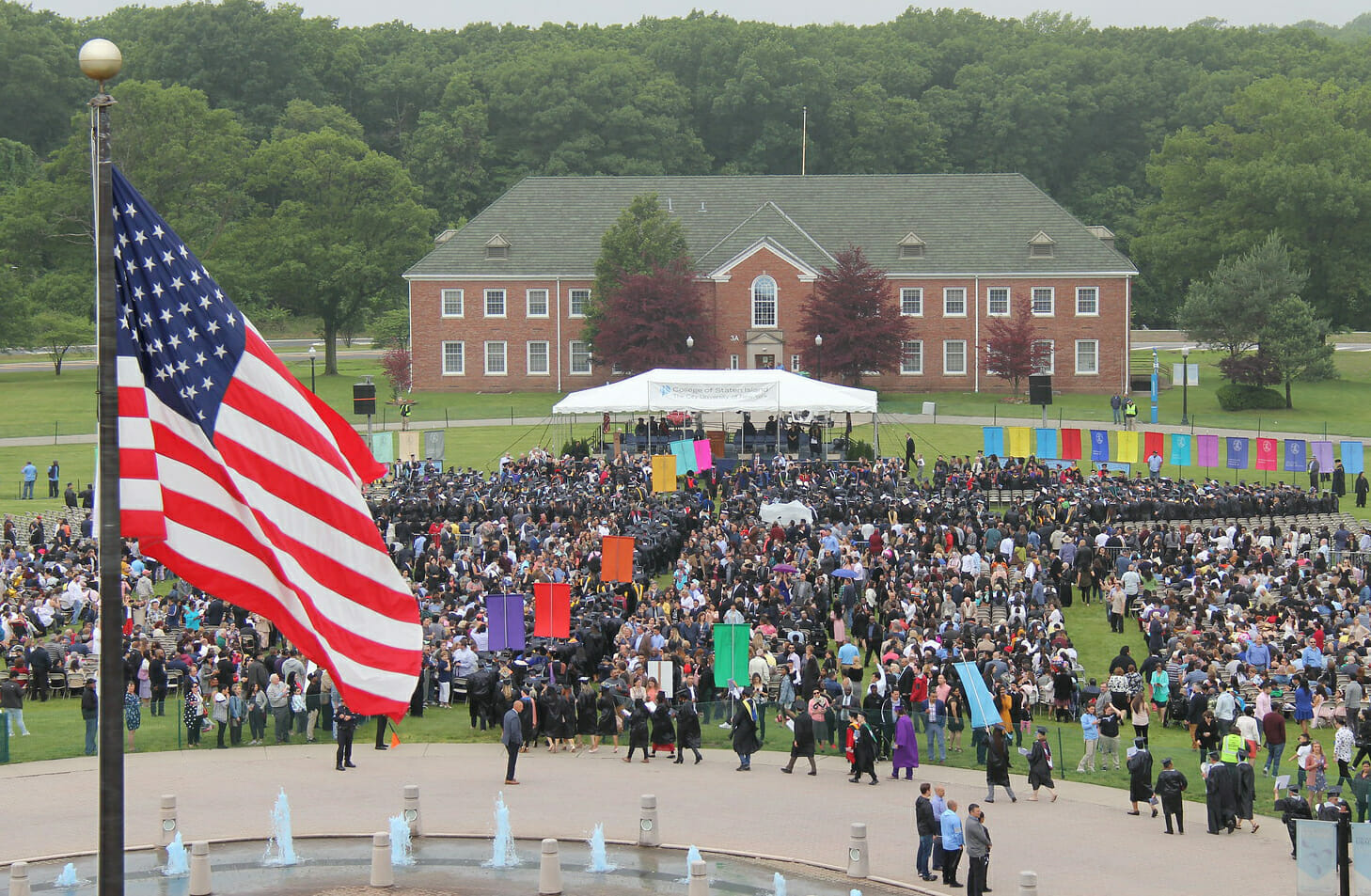On Thursday May 8, the CSI Center for Global Engagement and the Campus Activities Board hosted a dynamic and rhythmic show from the Calpulli Mexican Dance Company, celebrating Mexican folk dance and music.
In the Williamson Theatre, performers of the company gave a choreographed tour of different states and cities in Eastern, Central (Puebla), and Western regions of Mexico. Through that journey, the performance included three segments, with each representing a specific region in Mexico, and the historical significance of the folkloric themes, dancing, and costumes.
Artistic Director of the dance company Grisel Pren Monje explained to the audience before introducing the Eastern Mexican state of Veracruz, that it will be important to pay attention to what the dancers are doing with their feet. Zapateado, which derives from the Spanish word for shoes (zapato), is a dance performed by stomping your shoes rhythmically to the tempo of music, creating percussion along with other instruments.
“It’s not just about stomping the floor, it’s about making a rhythm,” she said. “We aren’t just dancers, we are also musicians because otherwise using our feet would just be random sound, we are part of the music as a percussionist with your feet.”
She also noted that like the performers on stage, she wore shoes with nails on the bottom so that when they stomp their feet, the sound is much louder. Monje instructed everyone in the theater to stand for a brief intermission to perform some different styles of Zapateado at their seats like Carretillas and Zapateado de Tres. The activity showed the energy, coordination, and body control required to dance to music, performing some of the faster styles. It also gave students and faculty of the World Languages and Literatures Department the focus it also takes to sound in rhythm collectively.
The second dance that was introduced refers to Central Mexico’s state of Puebla, introducing a dance called China Poblana, which refers to a specific dress style inspired by a famous legend. Catarina de San Juan or La China Poblana. She was an enslaved woman about whom there is little biographical information. Though she was thought to be originally named Mirra, born to a noble family in India, she was captured to be sold in Spain and eventually ended up becoming a revered Saint in Mexico.
The last stop was one of the most representative states of Mexico, the State of Jalisco, which is also known as the “land of mariachi,” for being the region where some of the earliest mariachi bands emerged. As a group, everyone in the theater interacted in a brief intermission before the mariachi-style performance for Jalisco, chanting Mexican cheers that are specifically used by mariachi bands to bring energy but also to help the audience breathe.
“The music, dances, and costumes of Jalisco are the most eye-catching of them all, and that’s how it’s represented throughout Mexican folk dance. It’s usually one of the first styles that comes to people’s minds,” said Monje.
Being an international company, the Calpulli Mexican Dance Company has toured the Middle East twice and Monje explained the eagerness of wanting to travel whenever they have the chance, to celebrate a great tradition. The bilingual event was an experience where you can learn so much, as well as enjoy music and dancing.
“These connections, sometimes you don’t actually have to be a dancer or musician to be able to experience what the roots are and it’s important for the Mexican community but we are all united,” she said.
This event was great for students with Mexican heritage on campus, but especially for those who aren’t familiar with the culture. It’s a wonderful opportunity to show you don’t need to be a musician or a dancer to participate or appreciate the historical traditions of a culture that differs from yours.
By Kyle Cicero
















